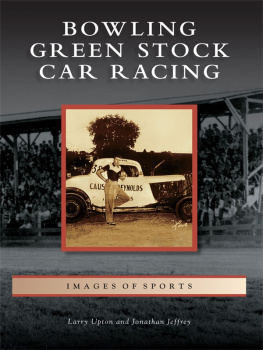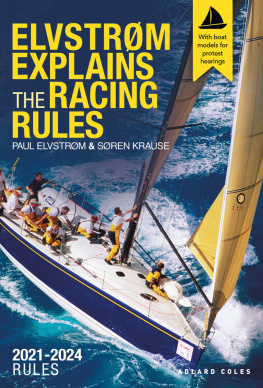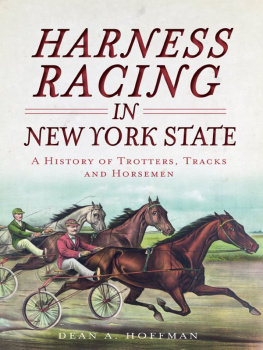Adam Cort - Getting Started in Sailboat Racing
Here you can read online Adam Cort - Getting Started in Sailboat Racing full text of the book (entire story) in english for free. Download pdf and epub, get meaning, cover and reviews about this ebook. year: 2004, publisher: McGraw Hill LLC, genre: Children. Description of the work, (preface) as well as reviews are available. Best literature library LitArk.com created for fans of good reading and offers a wide selection of genres:
Romance novel
Science fiction
Adventure
Detective
Science
History
Home and family
Prose
Art
Politics
Computer
Non-fiction
Religion
Business
Children
Humor
Choose a favorite category and find really read worthwhile books. Enjoy immersion in the world of imagination, feel the emotions of the characters or learn something new for yourself, make an fascinating discovery.

- Book:Getting Started in Sailboat Racing
- Author:
- Publisher:McGraw Hill LLC
- Genre:
- Year:2004
- Rating:4 / 5
- Favourites:Add to favourites
- Your mark:
- 80
- 1
- 2
- 3
- 4
- 5
Getting Started in Sailboat Racing: summary, description and annotation
We offer to read an annotation, description, summary or preface (depends on what the author of the book "Getting Started in Sailboat Racing" wrote himself). If you haven't found the necessary information about the book — write in the comments, we will try to find it.
A complete course in the fundamentals, Getting Started in Sailboat Racing dispels the sports elite aura and makes racing accessible to any sailor who wants to give it a try. This illustrated manual takes readers around the buoys, explaining the rules and tactics that govern starts, finishes, mark roundings, and boat-to-boat struggles for speed and advantage.
Getting Started in Sailboat Racing — read online for free the complete book (whole text) full work
Below is the text of the book, divided by pages. System saving the place of the last page read, allows you to conveniently read the book "Getting Started in Sailboat Racing" online for free, without having to search again every time where you left off. Put a bookmark, and you can go to the page where you finished reading at any time.
Font size:
Interval:
Bookmark:


Copyright 2005 by Adam Cort and Richard Stearns. All rights reserved. Except as permitted under the United States Copyright Act of 1976, no part of this publication may be reproduced or distributed in any form or by any means, or stored in a database or retrieval system, without the prior written permission of the publisher.
ISBN: 978-0-07-178262-3
MHID: 0-07-178262-1
The material in this eBook also appears in the print version of this title: ISBN: 978-0-07-142400-4, MHID: 0-07-142400-8.
All trademarks are trademarks of their respective owners. Rather than put a trademark symbol after every occurrence of a trademarked name, we use names in an editorial fashion only, and to the benefit of the trademark owner, with no intention of infringement of the trademark. Where such designations appear in this book, they have been printed with initial caps.
McGraw-Hill eBooks are available at special quantity discounts to use as premiums and sales promotions, or for use in corporate training programs. To contact a representative please e-mail us at bulksales@mcgraw-hill.com.
TERMS OF USE
This is a copyrighted work and The McGraw-Hill Companies, Inc. (McGraw-Hill) and its licensors reserve all rights in and to the work. Use of this work is subject to these terms. Except as permitted under the Copyright Act of 1976 and the right to store and retrieve one copy of the work, you may not decompile, disassemble, reverse engineer, reproduce, modify, create derivative works based upon, transmit, distribute, disseminate, sell, publish or sublicense the work or any part of it without McGraw-Hills prior consent. You may use the work for your own noncommercial and personal use; any other use of the work is strictly prohibited. Your right to use the work may be terminated if you fail to comply with these terms.
THE WORK IS PROVIDED AS IS. McGRAW-HILL AND ITS LICENSORS MAKE NO GUARANTEES OR WARRANTIES AS TO THE ACCURACY, ADEQUACY OR COMPLETENESS OF OR RESULTS TO BE OBTAINED FROM USING THE WORK, INCLUDING ANY INFORMATION THAT CAN BE ACCESSED THROUGH THE WORK VIA HYPERLINK OR OTHERWISE, AND EXPRESSLY DISCLAIM ANY WARRANTY, EXPRESS OR IMPLIED, INCLUDING BUT NOT LIMITED TO IMPLIED WARRANTIES OF MERCHANTABILITY OR FITNESS FOR A PARTICULAR PURPOSE. McGraw-Hill and its licensors do not warrant or guarantee that the functions contained in the work will meet your requirements or that its operation will be uninterrupted or error free. Neither McGraw-Hill nor its licensors shall be liable to you or anyone else for any inaccuracy, error or omission, regardless of cause, in the work or for any damages resulting therefrom. McGraw-Hill has no responsibility for the content of any information accessed through the work. Under no circumstances shall McGraw-Hill and/or its licensors be liable for any indirect, incidental, special, punitive, consequential or similar damages that result from the use of or inability to use the work, even if any of them has been advised of the possibility of such damages. This limitation of liability shall apply to any claim or cause whatsoever whether such claim or cause arises in contract, tort or otherwise.
T here are few things in this world more satisfying than sailboat racing. Theres the challenge of handling your boat in close quarters with other boats, the thrill of competition, the visceral beauty of being part of a fleet, the excitement of thundering to windward, neck and neck with another well-found vessel, and the view of the water around you littered with sailboats as far as the eye can see.
Unfortunately, the excitement of the racecourse is something many sailors never experience. Cruisers who wouldnt think twice about crossing hundreds of miles of open water blanch at the idea of racing around the buoys. Daysailors who are perfectly comfortable sailing their sloops through a crowded mooring field think they arent ready to mix it up with the big boys. Many are worried about what their fellow sailors might think and about making themselves look foolish. Others worry about safety. It can be scary sailing at high speed in a very small area with dozens of other boats.
Still, for all its terrors, the racecourse is, in reality, a remarkably safe place, and getting out there is more than worth the risk of losing a little gelcoat or tasting an occasional helping of humble pie. In fact, once you begin racing, you might wonder how anyone can truly appreciate the art of sailing without putting him- or herself to the test in a competitive environment. Uffa Fox, the famed English yachtsman and naval architect, perhaps put it best in his classic work, According to Uffa, when he admonished the novice sailor to get out on the racecourse as soon as possible, because, as he wrote, once you race, every fault is pointed out in the way other boats sail away from you, and when you do anything well this too is revealed as you start sailing away from the rest of the fleet.
The purpose of this book is to explain the fundamentals of racing, so that daysailors and cruisers will feel confident enough not only to crew on a racing boat, but to enter their own boat in a race. It does not cover sailing basics, because it is assumed that the reader is already familiar with his or her boat. Likewise it does not teach the nuances of higher-level strategy or sail tuning, because that will needlessly complicate the basic issues of getting around the buoys.
What this book will do is provide the sailor with everything he or she needs to negotiate the racecourse safely and efficiently, and maybe even come in first place from time to time. If you aspire to win an Olympic medal in the 470 class, you will need more than this book (unless you are very good). But then again, you will never win that medal if you dont get out on the course in the first place.
opens with a brief summary of a hypothetical race, and the subsequent chapters break down the racing experience into bite-size pieces. This not only makes the process easier to understand, but reflects the nature of the typical race, since it consists of a number of distinct and very specific parts. There are, of course, the rules (which are not half as complicated as some might think), the start, the windward leg, mark roundings, downwind sailing, the finish, and basic overall strategy. Weve also included a chapter on how to get involved; i.e., finding races and figuring out what kind of racing is best for you.
Historically, sailboats have existed not just for pleasure, but to get something done. Even the dowdiest cruiser has at its heart a clipper ship or fishing schooner just begging to be the first one in. Few of us will ever have the chance to round Cape Horn or survive killer storms at sea. But in the spirit of Admiral Horatio Nelson at the Nile, we can beat the pants off that fellow with the gaudy yellow spinnaker! Now lets get out there, put that boat to work, and have some fun!
WELCOME TO THE RACECOURSE
T o those not familiar with the sport, sailboat racing can seem like a study in controlled chaos, with very little in the way of control. One moment youll see clumps of boats sailing off in opposite directions, spreading themselves so thin its hard to tell if they are even part of the same group. Next theyll all hoist their spinnakers at the same time and sail along in a neat and tidy line. The start in particular can seem like a kind of waterborne madness. Aboard the committee boat, where the race committee administers the race, horns blare and flags go rushing up and down halyards, while the fleet of competitors circles about in what appears to be impossibly tight quarters, like hyperactive terriers sniffing the wind. A small powerboat with a couple of bright-orange inflatable buoys charges off to windward. Then all of a sudden a flag comes down, theres yet another blast of the horn or maybe even a gun, and some of the boats that had been milling about, apparently aimlessly, begin charging off in the same direction. Amazing! How did they know it was their turn? How do they keep from bumping into each other? And how do they even know where theyre going?
Font size:
Interval:
Bookmark:
Similar books «Getting Started in Sailboat Racing»
Look at similar books to Getting Started in Sailboat Racing. We have selected literature similar in name and meaning in the hope of providing readers with more options to find new, interesting, not yet read works.
Discussion, reviews of the book Getting Started in Sailboat Racing and just readers' own opinions. Leave your comments, write what you think about the work, its meaning or the main characters. Specify what exactly you liked and what you didn't like, and why you think so.








